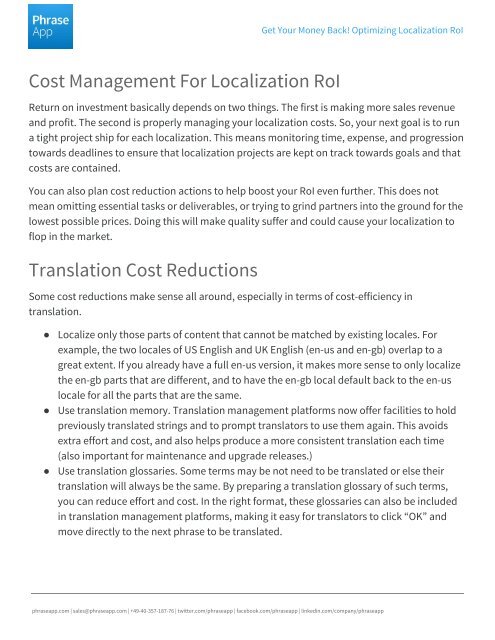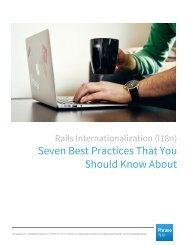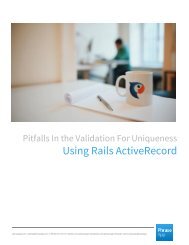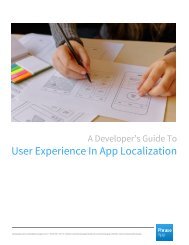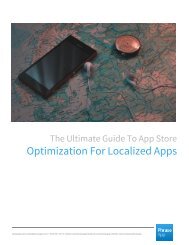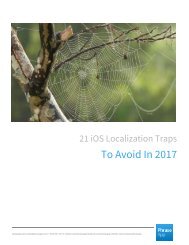Get Your Money Back Optimizing Localization RoI
You also want an ePaper? Increase the reach of your titles
YUMPU automatically turns print PDFs into web optimized ePapers that Google loves.
<strong>Get</strong> <strong>Your</strong> <strong>Money</strong> <strong>Back</strong>! <strong>Optimizing</strong> <strong>Localization</strong> <strong>RoI</strong><br />
Cost Management For <strong>Localization</strong> <strong>RoI</strong><br />
Return on investment basically depends on two things. The first is making more sales revenue<br />
and profit. The second is properly managing your localization costs. So, your next goal is to run<br />
a tight project ship for each localization. This means monitoring time, expense, and progression<br />
towards deadlines to ensure that localization projects are kept on track towards goals and that<br />
costs are contained.<br />
You can also plan cost reduction actions to help boost your <strong>RoI</strong> even further. This does not<br />
mean omitting essential tasks or deliverables, or trying to grind partners into the ground for the<br />
lowest possible prices. Doing this will make quality suffer and could cause your localization to<br />
flop in the market.<br />
Translation Cost Reductions<br />
Some cost reductions make sense all around, especially in terms of cost-efficiency in<br />
translation.<br />
● Localize only those parts of content that cannot be matched by existing locales. For<br />
example, the two locales of US English and UK English (en-us and en-gb) overlap to a<br />
great extent. If you already have a full en-us version, it makes more sense to only localize<br />
the en-gb parts that are different, and to have the en-gb local default back to the en-us<br />
locale for all the parts that are the same.<br />
● Use translation memory. Translation management platforms now offer facilities to hold<br />
previously translated strings and to prompt translators to use them again. This avoids<br />
extra effort and cost, and also helps produce a more consistent translation each time<br />
(also important for maintenance and upgrade releases.)<br />
● Use translation glossaries. Some terms may be not need to be translated or else their<br />
translation will always be the same. By preparing a translation glossary of such terms,<br />
you can reduce effort and cost. In the right format, these glossaries can also be included<br />
in translation management platforms, making it easy for translators to click “OK” and<br />
move directly to the next phrase to be translated.<br />
phraseapp.com | sales@phraseapp.com | +49-40-357-187-76 | twitter.com/phraseapp | facebook.com/phraseapp | linkedin.com/company/phraseapp


